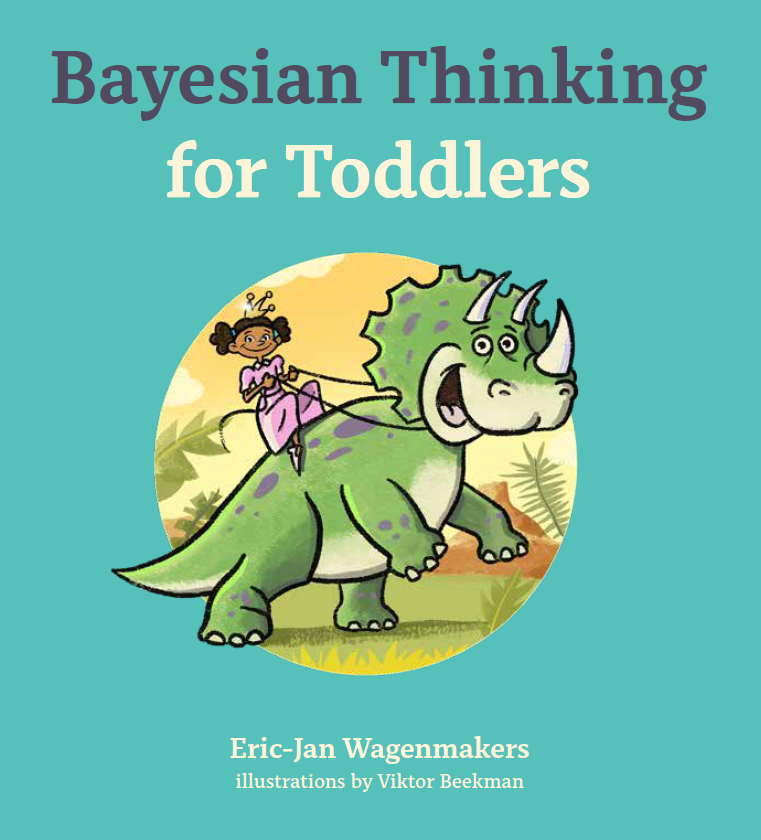 My friend E.-J. Wagenmakers sent me a copy of Bayesian Thinking for Toddlers, “a must-have for any toddler with even a passing interest in Ockham’s razor and the prequential principle.” E.-J. wrote the story and Viktor Beekman (of thesis’ cover fame!) drew the illustrations. The book can be read for free on https://psyarxiv.com/w5vbp/, but not purchased as publishers were not interested and self-publishing was not available at a high enough quality level. Hence, in the end, 200 copies were made as JASP material, with me being the happy owner of one of these. The story follows two young girls competing for dinosaur expertise, and being rewarded by cookies, in proportion to the probability of providing the correct answer to two dinosaur questions. Toddlers may get less enthusiastic than grown-ups about the message, but they will love the drawings (and the questions if they are into dinosaurs).
My friend E.-J. Wagenmakers sent me a copy of Bayesian Thinking for Toddlers, “a must-have for any toddler with even a passing interest in Ockham’s razor and the prequential principle.” E.-J. wrote the story and Viktor Beekman (of thesis’ cover fame!) drew the illustrations. The book can be read for free on https://psyarxiv.com/w5vbp/, but not purchased as publishers were not interested and self-publishing was not available at a high enough quality level. Hence, in the end, 200 copies were made as JASP material, with me being the happy owner of one of these. The story follows two young girls competing for dinosaur expertise, and being rewarded by cookies, in proportion to the probability of providing the correct answer to two dinosaur questions. Toddlers may get less enthusiastic than grown-ups about the message, but they will love the drawings (and the questions if they are into dinosaurs).
This reminded me of the Bayesian probabilities for babies book, by Chris Ferrie, which details the computation of the probability that a cookie contains candy when the first bite holds none. It is more genuinely intended for young kids, in shape and design, as can be checked on a YouTube video, with an hypothetical population of cookies (with and without candy) being the proxy for the prior distribution. I hope no baby will be traumatised from being exposed too early to the notions of prior and posterior. Only data can tell, twenty years from now, if the book induced a spike or a collapse in the proportion of Bayesian statisticians!
[Disclaimer about potential self-plagiarism: this post or an edited version will potentially appear in my Books Review section in CHANCE.




 This also led me to read a recent
This also led me to read a recent 